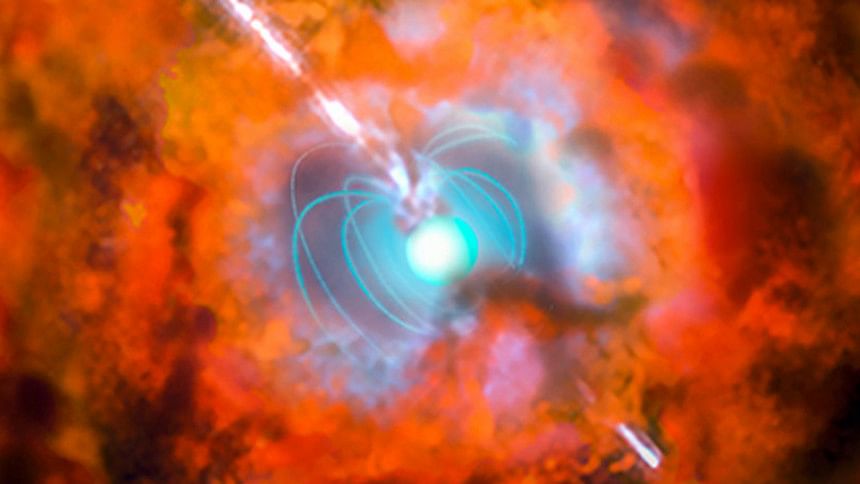Astronomers find ancient stars in Milky Way center

Astronomers found a few stars swirling around the centre of the Milky Way that were formed not long after the universe began.
Such ancient stars are known to exist around the edges of the galaxy but have never been detected in its central bulge before, reports Science News.
An international team of astronomers reported in the online journal Nature.com on November 11 that 23 stars in the galactic core with significantly low amounts of metals were observed with telescopes in Australia and Chile. The presence of low amount of metals is a signature of early stars, which probably were formed from the remnants of a supersized supernova, or hypernova.
"We didn't think there would be so many," says Andrew Casey, an astrophysicist at the University of Cambridge, adding that finding these stars is like "finding a needle in a haystack as there are a lot of stars and gases at the centre of the galaxy.
Casey and his team used the SkyMapper Telescope at Australian National University to identify 14,000 stars with low metal abundance. Then they used the Anglo-Australian Telescope to discover that very little iron is present in around 500 of those stars. Finally, the Magellan Clay Telescope in Chile was used to scrutinise the stars in high resolution and 23 stars were analysed with an especially low abundance of iron.
The star with the least amount of iron had one ten-thousandth as much iron as the sun, Casey said.
Stars that have metals like iron with high abundance were created quite a while after the universe began. Their metals originally formed in primordial stars that eventually exploded. So stars with little iron could be among the earliest stellar entity in the universe.
The observed low-iron star are likely to have been formed in the aftermath of an early hypernova, which is 10 times more powerful explosion than a typical supernova, the researchers say.
At least 14 of the low-metal stars are in orbits around Milky Way's central bulge, the oldest part of the galaxy, which is another indication of their early birth.
"It's not surprising that these stars exist there," says Anna Frebel, an astronomer at MIT. "What's more surprising is that it has taken this long to find them."
However, the researchers could not say how old the stars exactly.
"It's really difficult to obtain numbers for old stars," says Frebel, who has dated one star to 13.2 billion years old.
"Radioactive elements such as uranium that decay over time are usually needed to estimate stellar age. A true, first star that broke the cosmic dawn still awaits discovery," Casey says, adding that the stars in this study were the progeny of the first stars.
This new discovery helps confirm the accuracy of researchers' ideas about how the Milky Way might have formed, Frebel says. "Plugging in holes here and there with actual data, shows that we're on the right track to modeling the Milky Way and all its components in great detail."

 For all latest news, follow The Daily Star's Google News channel.
For all latest news, follow The Daily Star's Google News channel. 



Comments